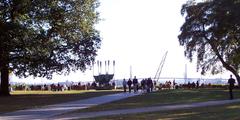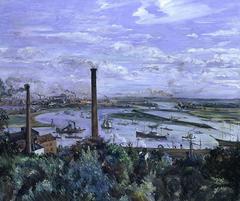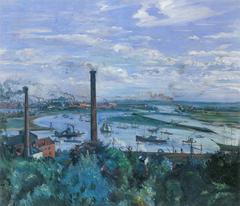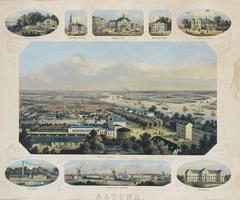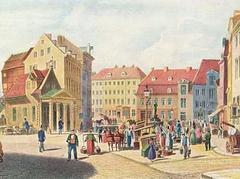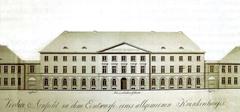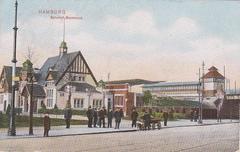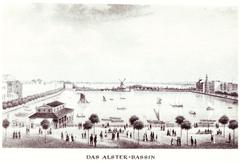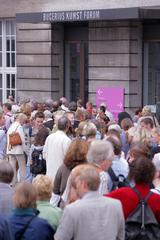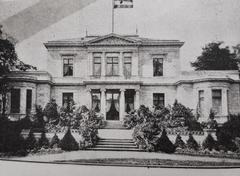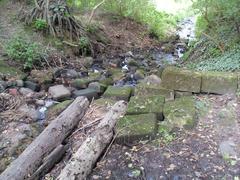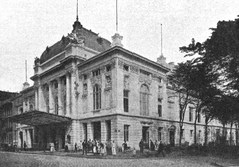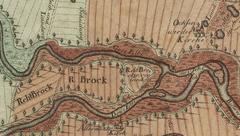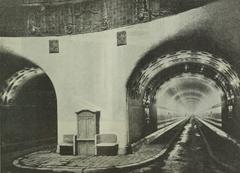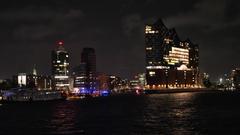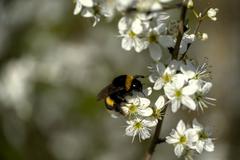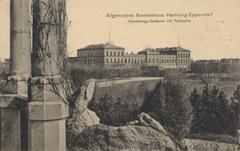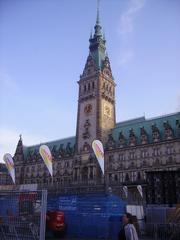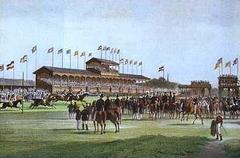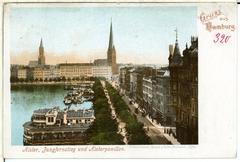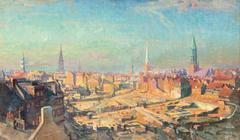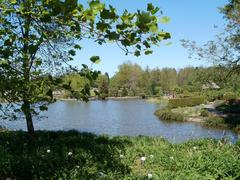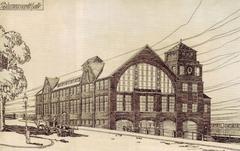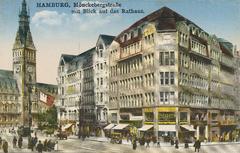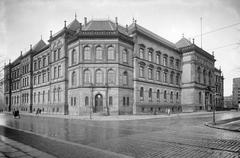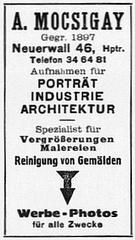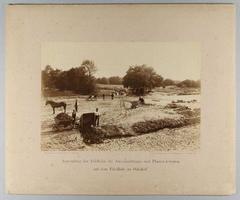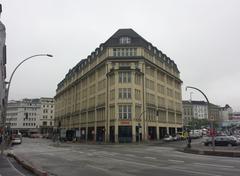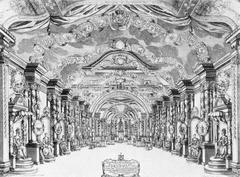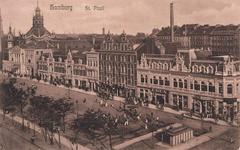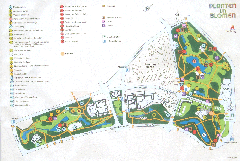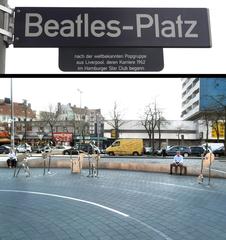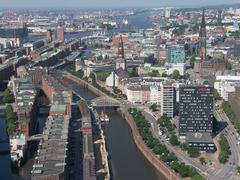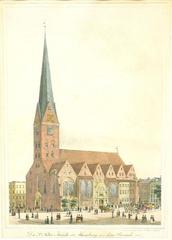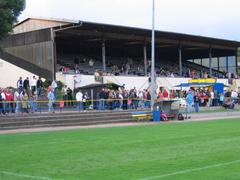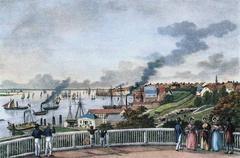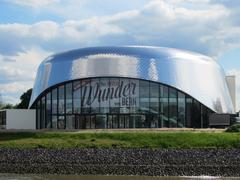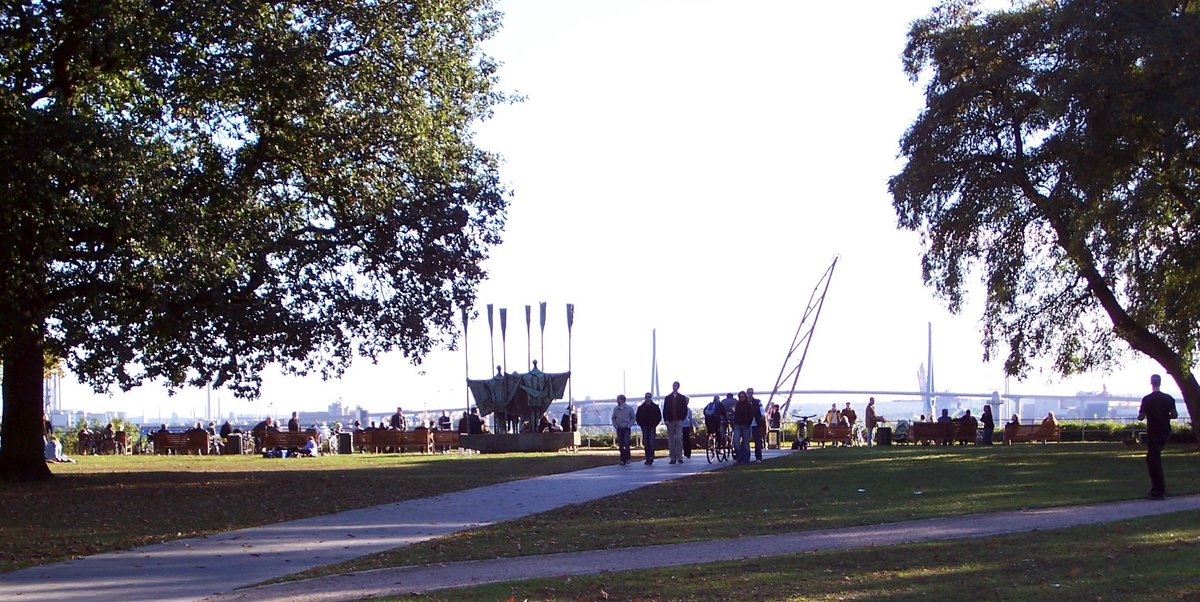
Altonaer Balkon Visiting Guide: Hours, Tickets, and Historical Insights
Date: 18/08/2024
Introduction
Altonaer Balkon, or Altona Balcony, is a picturesque park located in the Altona district of Hamburg, Germany. Renowned for its panoramic views of the Elbe River and the bustling Hamburg port, this park is steeped in history and cultural significance. Originally part of the city’s fortifications, Altonaer Balkon was transformed into a public park in the early 19th century. Today, it stands as a testament to Hamburg’s urban development and the importance of green spaces in city planning. Visitors to Altonaer Balkon can enjoy a variety of activities, from picnicking and ship watching to exploring art installations and capturing scenic photographs. The park is also a venue for numerous cultural events and hosts the annual Japanisches Kirschblütenfest, celebrated with vibrant cherry blossoms. For those planning a visit, Altonaer Balkon is easily accessible via public transportation and offers stunning views year-round. This guide aims to provide comprehensive information on the park’s history, visitor tips, and nearby attractions to ensure a memorable experience (Trebuchet Magazine, Solo Sophie, Hamburg Tourist Info).
Table of Contents
History and Significance
Historical Background
Altonaer Balkon, located in the Altona district of Hamburg, Germany, is a scenic park that offers panoramic views of the Elbe River and the bustling port of Hamburg. The history of Altonaer Balkon is deeply intertwined with the history of Altona itself, which was once an independent city before becoming part of Hamburg in 1938.
Altona was founded in 1535 and quickly grew into a significant port city due to its strategic location along the Elbe River. The area where Altonaer Balkon now stands was originally part of the city’s fortifications. In the 19th century, as Altona expanded and modernized, the fortifications were dismantled, and the area was transformed into a public park. The park was officially opened in 1839, making it one of the oldest public parks in Hamburg.
Architectural and Cultural Significance
The design of Altonaer Balkon reflects the 19th-century trend of creating urban green spaces for public enjoyment. The park features a blend of natural and landscaped elements, including manicured lawns, flower beds, and mature trees. One of the most notable features of the park is its elevated position, which provides visitors with stunning views of the Elbe River and the port of Hamburg.
The park’s architecture includes several historical monuments and sculptures. One of the most prominent is the statue of Kaiser Wilhelm I, which was erected in 1896 to commemorate the German Emperor’s contributions to the unification of Germany. Another significant monument is the “Fishermen’s Memorial,” which honors the fishermen who have lost their lives at sea.
Role in Hamburg’s Urban Development
Altonaer Balkon has played a crucial role in the urban development of Hamburg. As one of the city’s earliest public parks, it set a precedent for the creation of other green spaces in the city. The park’s location along the Elbe River also made it a popular spot for both locals and tourists, contributing to the development of the surrounding area.
In the early 20th century, the park underwent several renovations to accommodate the growing population of Hamburg. These renovations included the addition of new pathways, seating areas, and recreational facilities. Today, Altonaer Balkon remains a vital part of Hamburg’s urban landscape, offering a peaceful retreat from the hustle and bustle of the city.
Modern-Day Significance
In contemporary times, Altonaer Balkon continues to be a popular destination for both locals and tourists. The park’s elevated position provides some of the best views of the Elbe River and the port of Hamburg, making it a favorite spot for photographers and sightseers. The park is also a popular venue for cultural events, including concerts, art exhibitions, and festivals.
One of the most significant modern developments in the park is the installation of the “Elbe Viewing Platform,” which was completed in 2011. This platform offers an unobstructed view of the river and the port, enhancing the park’s appeal as a tourist destination. The platform is also equipped with informational plaques that provide historical and cultural context, making it an educational experience for visitors.
Environmental and Ecological Importance
Altonaer Balkon is not only significant for its historical and cultural value but also for its environmental and ecological importance. The park serves as a green lung for the city, providing a habitat for various plant and animal species. The mature trees and landscaped gardens contribute to the park’s biodiversity, making it an important ecological asset for Hamburg.
The park’s location along the Elbe River also makes it a crucial part of the city’s flood management system. The elevated position of the park helps to protect the surrounding areas from flooding, while the green spaces absorb rainwater and reduce runoff. This makes Altonaer Balkon an essential component of Hamburg’s efforts to mitigate the impacts of climate change.
Community and Social Impact
Altonaer Balkon has a significant impact on the local community, serving as a gathering place for social and recreational activities. The park’s open spaces and scenic views make it a popular spot for picnics, family outings, and community events. The park also hosts various cultural and educational programs, including guided tours, workshops, and lectures.
The park’s role as a community hub is further enhanced by its accessibility. Altonaer Balkon is easily accessible by public transportation, with several bus and train lines serving the area. The park is also equipped with amenities such as restrooms, playgrounds, and picnic areas, making it a convenient and family-friendly destination.
Visitor Information
Ticket Prices and Opening Hours
Altonaer Balkon is open to the public year-round and does not require an entrance fee, making it an accessible destination for everyone. The park is generally open from dawn until dusk, but it’s always a good idea to check the local listings for any special events or seasonal changes in operating hours.
Travel Tips
Reaching Altonaer Balkon is easy via Hamburg’s efficient public transportation system. The nearest train station is Altona, which is served by several S-Bahn and regional train lines. From there, it’s just a short walk to the park. Bus services also run frequently to the area.
Nearby Attractions
While visiting Altonaer Balkon, take the opportunity to explore nearby attractions. The Altonaer Museum, which focuses on the cultural history of northern Germany, is just a short distance away. The Fischmarkt, held every Sunday morning, is another must-visit spot for a taste of local life.
Guided Tours and Special Events
Guided tours of Altonaer Balkon are available and offer insights into the park’s history, architecture, and natural features. The park also hosts various special events throughout the year, including open-air concerts, art exhibitions, and community festivals.
Photographic Spots
Photographers will find Altonaer Balkon a treasure trove of opportunities. The elevated views of the Elbe River and the port provide stunning backdrops for landscape shots, while the park’s historical monuments and lush greenery offer plenty of subjects for creative compositions.
FAQ Section
-
What are the opening hours of Altonaer Balkon?
- The park is generally open from dawn until dusk, but it’s advisable to check for any special events or seasonal changes.
-
Is there an entrance fee for Altonaer Balkon?
- No, Altonaer Balkon is free to enter.
-
What can you see at Altonaer Balkon?
- Visitors can enjoy panoramic views of the Elbe River, historical monuments, landscaped gardens, and various cultural events.
Conclusion
Altonaer Balkon is a park of immense historical, cultural, and environmental significance. Its rich history, stunning views, and role in Hamburg’s urban development make it a must-visit destination for anyone exploring the city. Whether you’re a history buff, a nature lover, or simply looking for a peaceful place to relax, Altonaer Balkon offers something for everyone.
For more information on visiting Altonaer Balkon and other attractions in Hamburg, download our mobile app Audiala, and follow us on social media for the latest updates and tips.
References
- Trebuchet Magazine. A Legacy of Smiles: LUAP at Altonaer Balkon, Hamburg. Trebuchet Magazine
- Solo Sophie. Hamburg Cherry Blossoms: Best Places to See Spring Flowers in the City. Solo Sophie
- Hamburg Tourist Info. Sehenswürdigkeiten Hamburg: Geheimtipps Hamburg. Hamburg Tourist Info
- Hamburg Travel. Green Hamburg: Parks & Green Spaces. Hamburg Travel
- Lonely Planet. Altonaer Balkon. Lonely Planet
